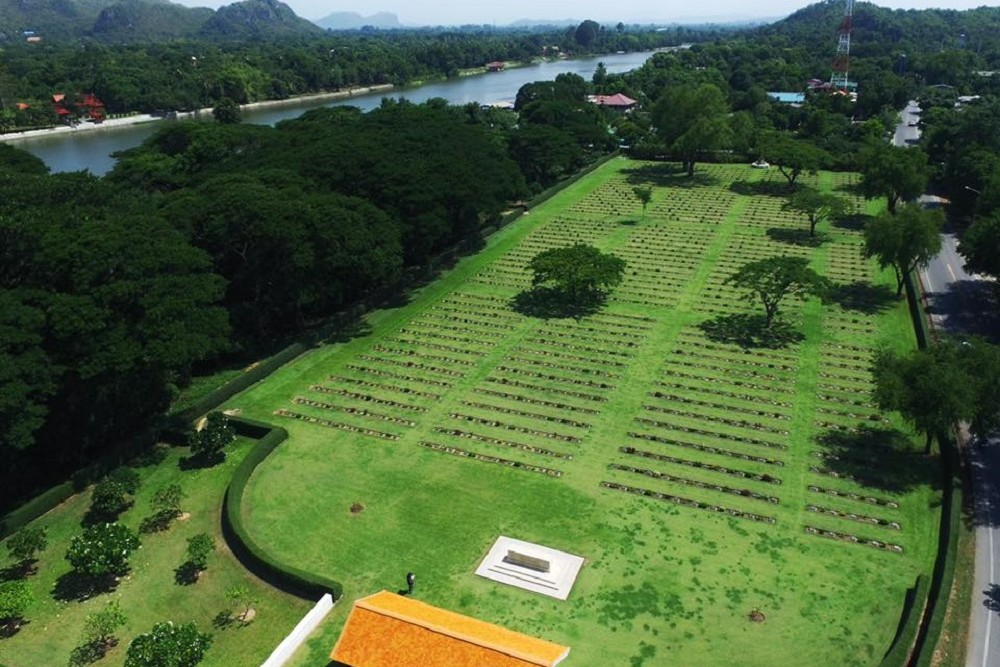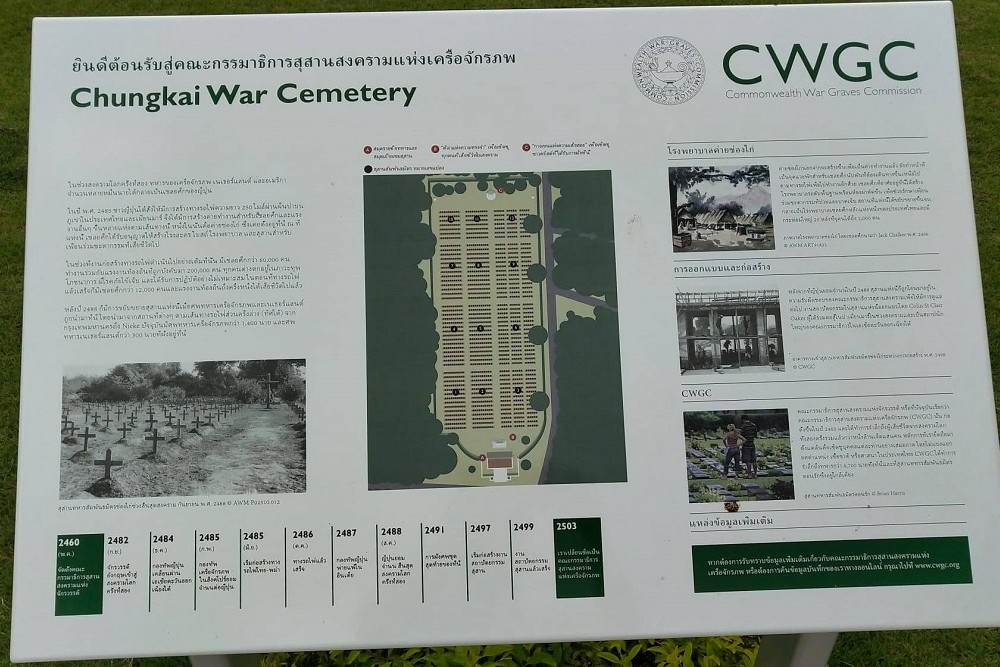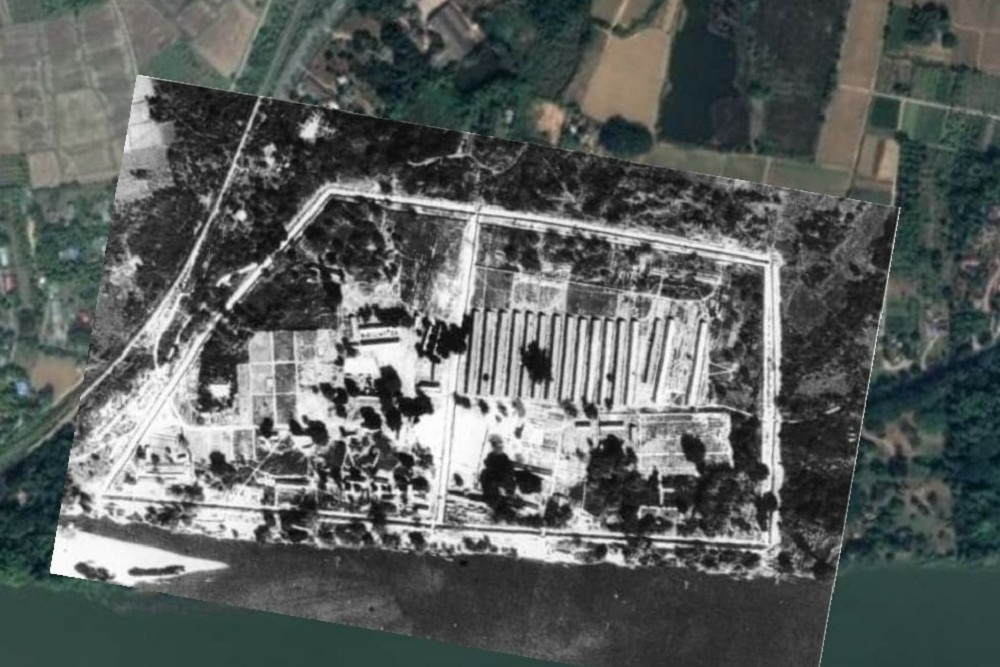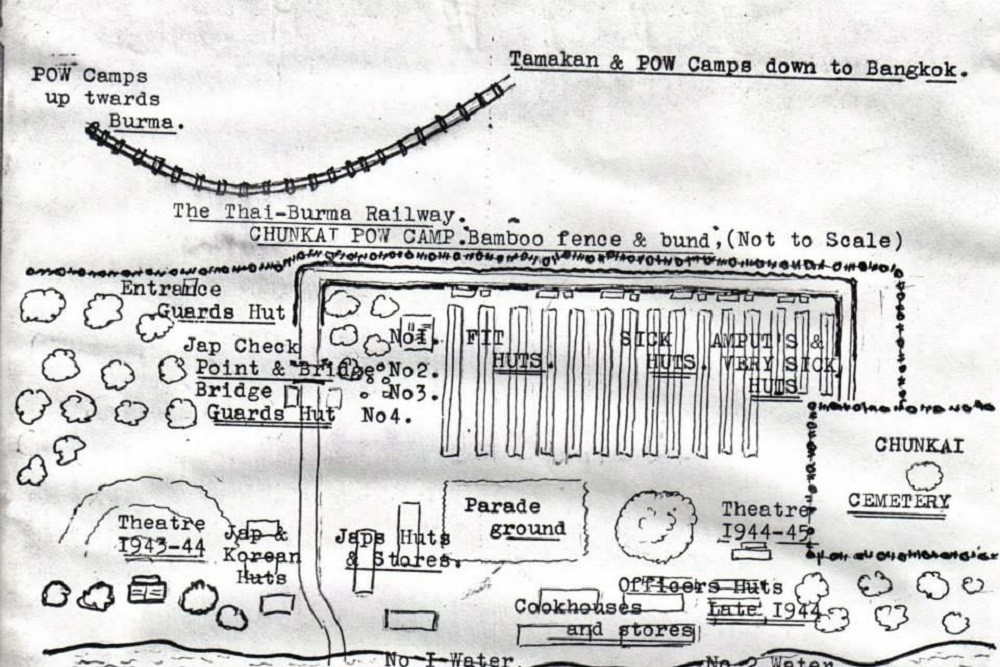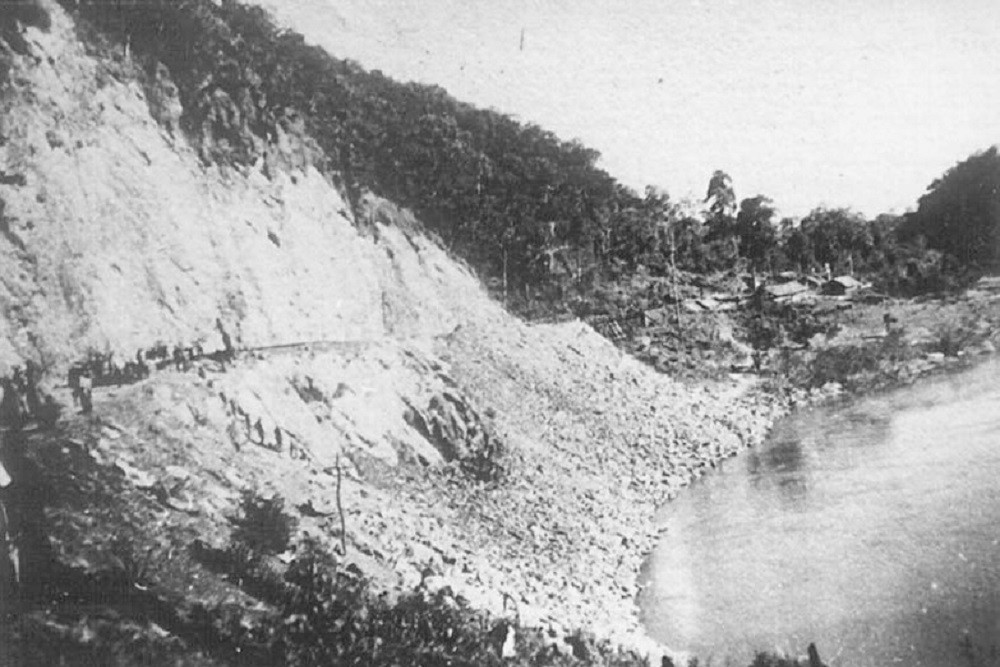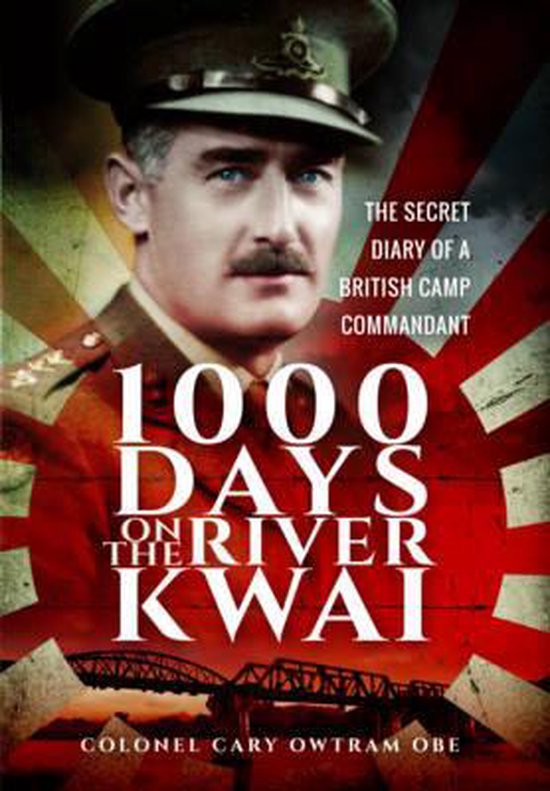Commonwealth War Cemetery Chungkai
The CWGC war graves cemetery is the only one of the three that hold Thai-Burma Railway remains that was an active cemetery. The other two – in Kanchanaburi and Thanbyuzayat are collection cemeteries.
The ChungKai POW camp at Kilo 60 of the Railway was the first actual POW work camp. The earliest arrivals in OCT 42 were mostly British Army Officers. Many of them had been the cadre of Indian Army units who had been separated from those men in Singapore. There was an initial resistance on the part of the officers to do manual labor. The machine gun scene from the Bridge on the River Kwai movie is thought to have been based on that confrontation.
The ChungKai camp was quite unique in many ways. It was a microcosm of the entire Railway project. In addition to laying tracks from the Mae Klong bridges, these men encountered the first of many limestone outcroppings that required what is generally referred to as a ‘cutting’. Using only a hammer and chisel, holes were drilled then filled with explosives to blast away the rock until a path was carved through the rock. There were two of these cuttings needed at Khao Poon. But first they had to move dirt to make a 10m high ‘fill’ to level the ground along the river bank. Beyond the cuttings, a moderate-sized bridge spans a ravine. It is still known today as the "Officers Bridge". Filling, cutting and bridge building were how the Railway was constructed.
Once the work in this area was complete, the men were marched to new camps farther along the Railway. Because of its strategic location at the mouth of the Kwae Noi River, rather than abandon this camp, it was converted to the first of many ‘hospital’ camps. But these were not actual hospitals. They were generally where the sickest men were sent to die. It is a testimony to the Allied medical staff that any survived at all. Hence, ChungKai became the first POW cemetery as well.
The common myth is that the graves seen there today are of those who died there. While that is true for many, it is not exclusive. Some remains were interred there post-war and all of the Australian remains were shifted to Don Rak. The exact process by which this occurred is not fully understood.
ChungKai was also a transit point for supplies being ferried up the river to the work camps. One POW describes a literal fleet of small boats docking there as they shuttled up and down the river.
It also seems that it later operated as a quarantine camp for POWs who were being brought in from the border area where there had been a cholera outbreak. They were held there before being consolidated to the camps at Kanchanaburi. British Col Owtram, whose survivor account 1000 Days on the River Kwai is cited elsewhere on this website, spent a part of his POW time here as did Australian LtCol ‘Weary’ Dunlop.
What remains today as the CWGC war graves cemetery is but a small part of the camp that ran for nearly a kilometer along the riverbank. There are just over 300 Dutch POWs interred here. In addition, there are 3 non-POW graves of Dutch citizens added in 1946. Among them is the only other woman in these cemeteries (there is a single grave of a British woman at Don Rak). Apparently Agnes M. Mende was a 25yo clerk working for the DEI Navy. She is said to have died a ‘heroic death’, at the POW hospital in Nakorn Pathom, but little more is known of her story. The other two were elderly gentlemen.
Do you have more information about this location? Inform us!
Source
- Text: Jerry Karwacki
- Photos: Jerry Karwacki
- OWTRAM, CARY, 1000 Days on the River Kwai, Pen & Sword, Barnsley, 2017.
